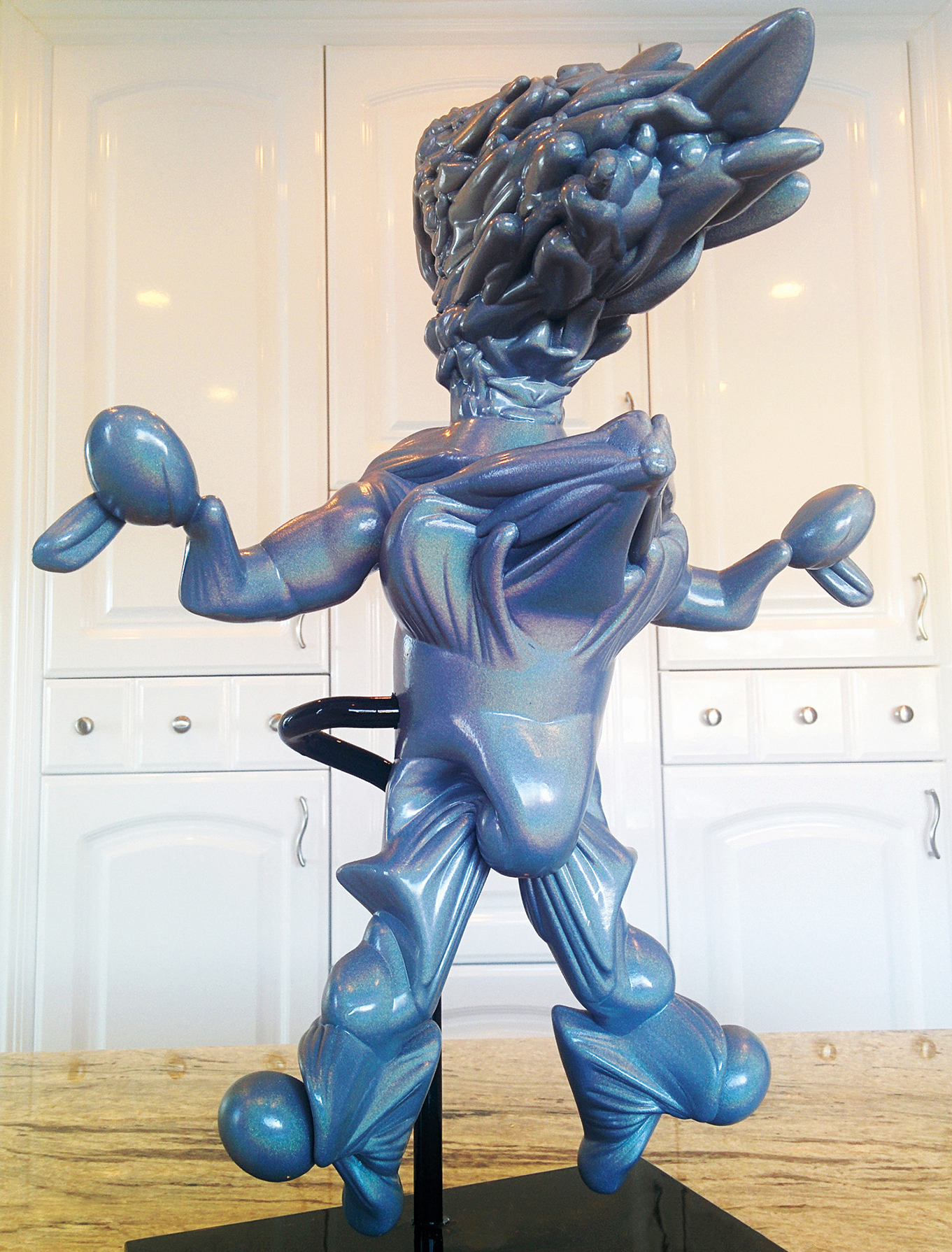Photo by Russ Fischella
Corinne Whitaker ’56 envisioned computer-designed sculpture well before 3-D printers arrived to revolutionize industrial production and titillate home hobbyists.
Corinne lives and works in Foster City, Calif., in the heart of Silicon Valley. She relishes the entrepreneurial climate and what she calls the “can-do spirit” of the Northern California high-tech industry. When she started making digital art in the 1980s, no art programs for computers existed. She wrote her own code and experimented with various processes, but she often bumped up against technical limitations: Computer processing speeds were slow and cumbersome. Sometimes a rendering would take 48 hours to load and then the computer would crash, leaving her with nothing. But these setbacks didn’t deter her. “An artist’s ideas are always farther ahead of the available technology,” she says.
When 3-D printing technology became more available and affordable nine years ago, Corinne jumped to take advantage of the opportunities it afforded. She started with small, 7-inch-tall 3-D prototypes and now makes larger sculptures. Each piece begins as a 3-D computer-aided design (CAD) file, which is then sent to a large 3-D printer at an industrial fabrication company. Technicians at the company then “output” her design in whatever media Corinne specifies, such as an array of metals, or plaster with a variety of finishes.
As a woman in a field dominated by men, Corinne has learned to stand her ground. “When people say, ‘You’re being difficult,’ I reply, ‘Yes, because I’m very good at what I do,’” she says. She enjoys collaborating with the technicians who fabricate her designs: “If I can establish a line of communication, it’s exciting, because we can both go places that neither of us has been before.”
Corinne considers herself a futurist. “I love the unknown. I love tomorrow,” she says. She reads widely about different cultures, civics, biology, physics, philosophy—“anything that offers insight into where we’re headed as a species.” These readings inform her wide-ranging opinions and animate her writing in her e-zine Digital Giraffe (www.giraffe.com).
She also sees the future’s darker side. Although humans are a remarkable species, “we lack judgment. We are not very good to one another or the planet,” she says. “Frankly, we may not be here very much longer.” Corinne envisions humans as instruments of their own obsolescence, rendered irrelevant by new life forms. These beings, propagated by artificial intelligence, may not even be carbon-based, she says. They may relate to time and gravity entirely differently than humans do.
Corinne’s recent sculptures embody this brave new world. They look outwardly charming and whimsical, even comical, but they carry a worrisome message about the future if humans continue on their current path. “Artificial intelligence is fascinating and exciting and also very scary,” she says. “What will we do to contain it? How will we control it? These are serious concerns.”
In the midst of these dark imaginings, Corinne remains optimistic. “People ask me, ‘How long will you continue to use computers for your art?’ And I tell them, ‘As long as the magic is there.’ And the magic is always there.”
 Finian, by Corrine Whitaker ’56
Finian, by Corrine Whitaker ’56





We ask that those who engage in Wellesley magazine's online community act with honesty, integrity, and respect. (Remember the honor code, alums?) We reserve the right to remove comments by impersonators or comments that are not civil and relevant to the subject at hand. By posting here, you are permitting Wellesley magazine to edit and republish your comment in all media. Please remember that all posts are public.